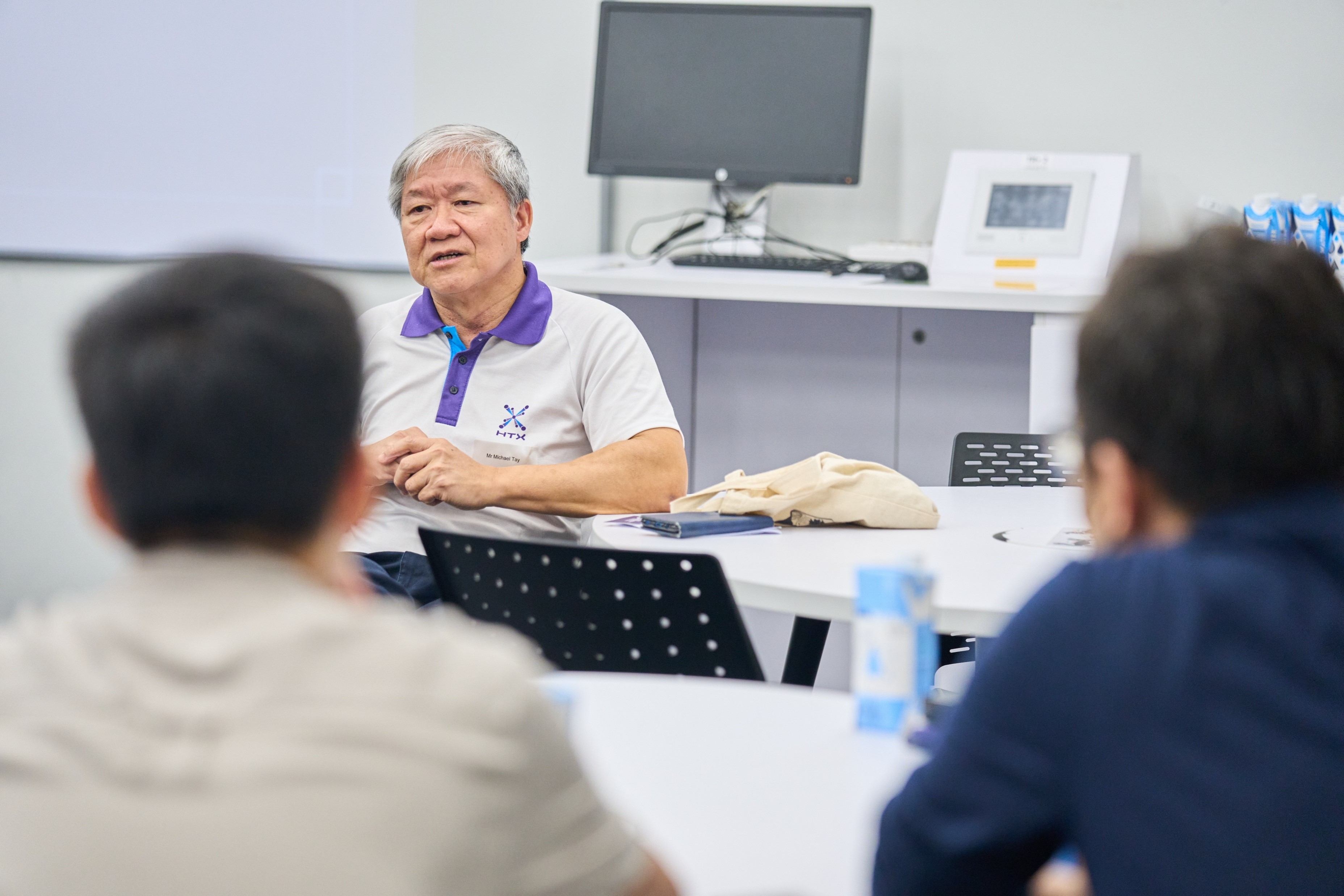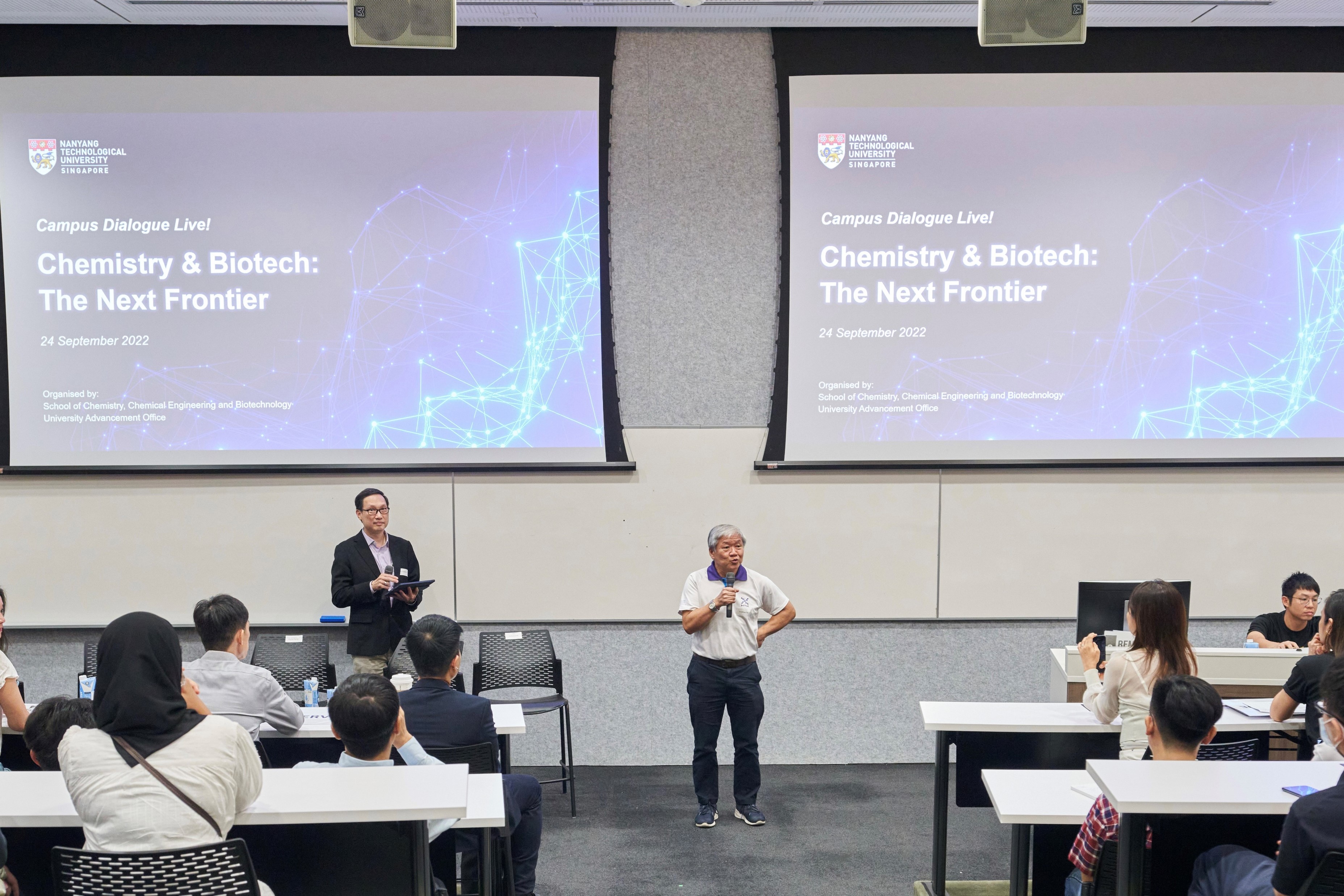 Chief Forensic Scientist Dr Michael Tay speaking at the Campus Dialogue Live! event on Sept. 24, 2022. (Photo: NTU)
Chief Forensic Scientist Dr Michael Tay speaking at the Campus Dialogue Live! event on Sept. 24, 2022. (Photo: NTU)
“Technology is enabling breath-taking breakthroughs in forensic science,” said Dr Michael Tay, Chief Forensic Scientist, Forensics Centre of Expertise at HTX.
Dr Tay was speaking about trends and a career in forensics at a “Campus Dialogue Live! – Chemistry & Biotech: The Next Frontier” industry sharing event organised by Nanyang Technological University’s (NTU) School of Chemistry, Chemical Engineering and Biotechnology (CCEB) and University Advancement Office on Sept. 24.
Is it too invasive, onerous, and time-consuming to take a blood, urine, or hair specimen for illicit drug analysis in the lab?
“No sweat!” according to Dr Tay. Traditionally, 50 to 100 millilitres of urine need to be collected from suspects for lab analysis, taking several days for results. Fast-forward to the present and HTX forensics researchers are harnessing the latest technology to compress material, time, and space by detecting these controlled substances in far lesser amounts of sweat, within minutes at the scene.
The skin is the largest organ of the body and sweating not only detoxifies the body but also regulates body temperature. Sweat is closely related to blood in chemical composition, and wearable sensors, microfluidic chips, and patches allow for the detection of illicit drugs, biomarkers, and metabolites in this transparent biofluid secreted by the skin of the fingertips and wrist.
Chemistry and biotech: The next frontier
The Campus Dialogue Live! event consisted of a main session where four NTU alumni and faculty presented on how research in chemistry and biotechnology was moving to the next frontier from upcycling waste to industrial compounds to creating biologically responsive drugs for more effective health treatments. This was followed by concurrent in-person breakout group discussion sessions with industry partners.
The event, attended by NTU alumni, students, faculty, and members of the public, saw about 150 people tuning in to a livestream of the main session via Zoom and 45 people participating in-person.

Chief Forensic Scientist Dr Michael Tay (centre) at the NTU Campus Dialogue Live! Event. (Photo: NTU)
Collaboration and innovation to solve crime
The speakers emphasised collaboration and innovation in solving major global problems such as pollution, global warming, and medical challenges. “Forensics is solving an age-old problem that has existed since the dawn of mankind, communities, cities, and civilisation – Crime,” Dr Tay said.
“The bar is very high for forensic science – justice relies on objective evidence and reliable forensic examinations. Forensic work is under the intense scrutiny of the Court, scientific community, media, and public. It must be error-free and of the highest standards,” added Dr Tay, who has over 30 years’ experience in the forensics field.
“While CSI (Crime Scene Investigation) may seem glamorous, frontline enforcement (operations) officers are less glamorous, and forensic research scientists are the least glamorous because we work mainly behind the scenes to support the administration of justice,” Dr Tay said.
With forensics covering a wide spectrum of disciplines including narcotics, trace evidence, marks and patterns, biochemical analysis, crime scene analysis and reconstruction, forensic scientists are increasingly exploring new technologies and a cross-disciplinary, collaborative approach to solve crime. For example, the Forensics team at HTX is collaborating with other centres of expertise such as Robotics, Automation & Unmanned Systems (RAUS) to develop innovations to force multiply the Home Team.
“HTX forensics is an exciting place to work in,” Dr Tay said.
We are always seeking inquisitive and innovative individuals to co-create extraordinary solutions with us.
Join us to be at the forefront of the finest tech capabilities in the field! Join Us

